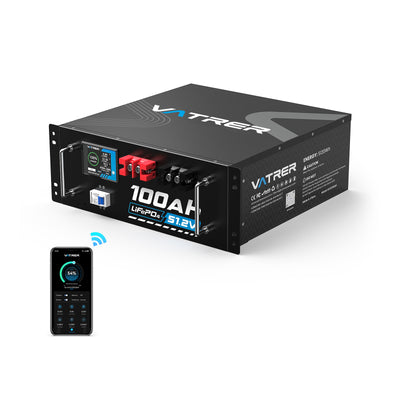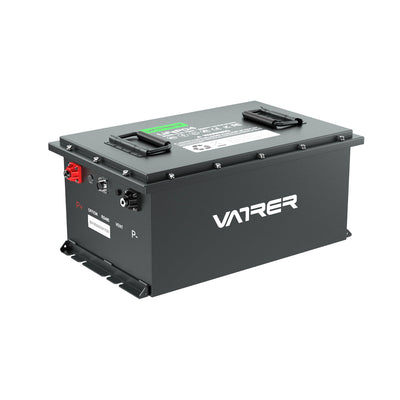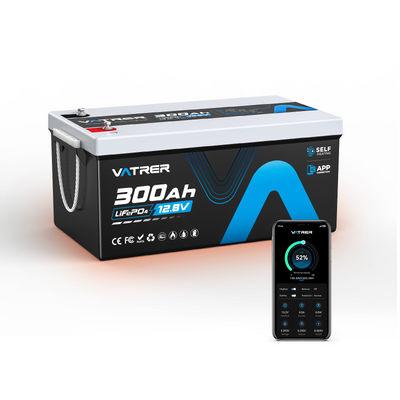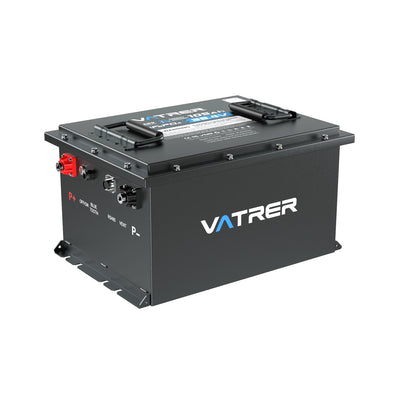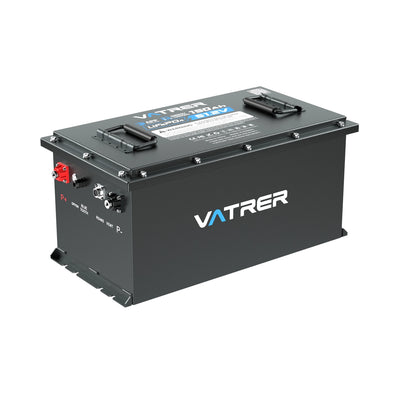
How Long Do Golf Cart Batteries Last?
As a weekend golfer who’s logged countless hours cruising the fairways, I’ve had my share of golf cart highs and lows. My old Club Car wasn’t just for the golf course, it doubled as my go-to for hauling yard supplies and shuttling kids around our sprawling neighborhood. But nothing stalls a good day like a battery powered golf cart that sputters out mid-round or limps home barely charged. That’s when I dove into the world of golf cart batteries, swapping tales with fellow players and tinkering in my garage to find what works. If you’re wondering about golf cart battery lifespan or when it’s time to replace your setup, I’m sharing what I’ve learned through real-world use—mistakes, wins, and all—to help you keep your cart rolling strong.

What Are Deep Cycle Batteries for Golf Carts?
Early on, I assumed all batteries were alike—until my first cart died halfway through a back nine. Golf cart batteries are deep cycle batteries, built to deliver steady power over hours of use, unlike car batteries that fire off quick bursts to start engines. Their ability to handle high torque for hills and sustained loads for long rounds makes them ideal for golf course demands. This deep cycling ability suits golf carts, low-speed vehicles (LSVs), and electric powersports gear. Most carts run on 36V or 48V systems, combining 6V, 8V, or 12V units for the required voltage, and the type of battery you choose shapes range, weight, and maintenance.
My first setup was a 48V pack of lead acid batteries—affordable but a maintenance wake-up call. Checking water levels monthly felt like a chore, and one spill taught me to respect their chemistry. Years later, switching to lithium batteries changed the game: less hassle, longer runs. Knowing these basics helps explain why some setups outlast others, especially when factors including usage and care kick in.
Golf Cart Battery Lifespan: What I Learned from Years on the Course
When I first asked, “how long do golf cart batteries last?” I wanted a straight answer. Reality? It depends. My original lead-acid batteries lasted about four years, roughly 500 partial cycles, powering two rounds a week plus daily errands. That’s typical: lead acid batteries span 4–6 years, or 500–1,000 cycles with proper care. Fleet carts at my local course, hammered daily by multiple drivers, often tap out at 3–4 years. A cycle, by the way, is one full or partial discharge and recharge, with partial cycles being gentler on batteries.
Switching to lithium batteries—specifically LiFePO4—was a game-changer. Two years in, I’ve clocked over 2,000 cycles with no slowdown, pointing to 8–15 years under typical use, potentially 20 with optimal care. For my 48V system, I’m betting on 12–15 years based on moderate use. A fleet cart used daily for 18-hole rounds might hit 8–10 years with lithium, while a weekend golfer’s pack could stretch further. Lead acid struggles with deep discharges and heat, while lithium’s higher cycle life shines, especially for frequent riders.
Exploring Types of Golf Cart Batteries: Finding What Fits Your Ride
Choosing a golf cart battery felt like picking the right club for a tricky shot—each type has trade-offs.
My first go was with flooded lead acid batteries: affordable at $100–150 per 6V unit and widely available. But they’re heavy (60 lbs each), demand regular water level checks, and fade after 4–6 years. Absorbed glass mat AGM batteries were my next try—sealed, leak-proof, and faster-charging (up to 5x quicker in my tests). They lasted 5–7 years but cost more and didn’t lighten my lifted cart. Gel lead-acid batteries handled cold storage well, but slower charging clashed with my quick-turnaround needs.
Then came lithium batteries, specifically LiFePO4. They’re lightweight, cutting my cart’s weight by 300+ pounds, and deliver higher energy density for longer trips—full 18 holes, no sweat. Their stable chemistry resists thermal runaway, making them safer for hot golf course days. No water checks, low self-discharge for weeks of storage, and a Battery Management System (BMS) to prevent overcharging made them ideal. The catch? Higher upfront cost, but the longevity pays off. Note that 6V batteries offer longer runtime but require more units, increasing weight, while 12V batteries simplify setups for lighter carts.
Here's a comparison from my experience:
| Battery Type | Lifespan (Years) | Cycle Life | Maintenance Needs | Key Advantage | Best Use |
|---|---|---|---|---|---|
| Lead Acid (Flooded) | 4-6 | 500-1,000 | High | Low cost | Budget, light use |
| AGM | 5-7 | 800-1,200 | Moderate | Leak-proof, faster charge | Moderate use, mixed climates |
| Gel Lead-Acid | 4-6 | 600-1,000 | Moderate | Cold-weather resilience | Seasonal use, storage |
| Lithium (LiFePO4) | 8-20 | 3,000-5,000 | Low | Lightweight, low maintenance | Frequent use, long-term value |
This ties directly to the factors that wear batteries down fastest.
What Shortens Golf Cart Battery Life?
Battery life isn’t just about the label—it’s how you treat it. My lead acid pack suffered when I let it dip below 20% charge, speeding up sulfation. Summer heat on the golf course cut capacity by up to 20%, and cold below 32°F slashed lead-acid performance by 30–50%. Winter storage without a trickle charger nearly killed one battery. Heavy use during tournament season, with constant deep cycling, shaved months off, as did LED lights for evening rides. Even with light use, lead-acid batteries degrade naturally after 5–7 years due to chemical aging.
Lithium is more resilient, but not immune. My BMS protects against overcharging, but I avoid direct sun to keep temps down. Fleet carts with multiple daily drivers face twice the wear of personal carts, needing stricter charging schedules. These factors including temperature, charging habits, and power draw can swing your battery's lifespan by years. Knowing what to watch for keeps you moving.
When It's Time to Replace Your Golf Cart Battery
Nothing stings like a cart stalling mid-fairway. My first clue was sluggish charging times—my lead acid pack crept from 6 to 10+ hours. Acceleration tanked; hills became a crawl. Range shrank—Two rounds became barely nine holes. A puddle under the cart flagged a lead-acid leak—toxic electrolyte that risked frame damage. Handle such leaks with gloves and dispose at certified recycling centers to avoid environmental harm. Corrosion on terminals and bulging cases from charging heat were final nails. For lithium, check for BMS alerts or irregular app readings, though overheating is rare with proper systems—it may signal a faulty BMS or extreme conditions.
Any of these signs—slow charging, weak acceleration, leaks, or damage—means it’s time to replace, no matter the battery’s age. Catching these early saved me from bigger repairs.
Maintenance Practices to Extend Your Golf Cart Battery Life
Regular maintenance turned my battery game around.
- For lead acid, I check water levels monthly with distilled water, avoiding a corrosion scare. Equalization charging every 3-6 months balances cells to prevent sulfation, but follow battery manufacturer guidelines to avoid overcharging.
- For lithium, it’s simpler—Charge to 80–100% after each use, avoiding deep discharges below 20%. I check BMS alerts weekly via app and ensure firmware updates for my Vatrer pack. Store lithium at 50–80% charge in 40–77°F conditions to maximize lifespan.
My garage stays shaded to dodge heat, and for winter storage, a smart charger maintains 40-80% charge. I inspect terminals monthly for corrosion (lead acid) or damage (lithium), using a Bluetooth app for lithium status. Avoiding hilly routes cuts strain, and these proper maintenance routines have stretched my setup's life with zero hiccups.
Lithium vs. Lead-Acid Golf Cart Batteries: Why I Made the Switch
Switching to lithium wasn’t just frustration—it was math and ethics. Lead acid costs less upfront ($400 for a 48V pack vs. $800–1,200 for lithium), but over 10 years, lead-acid may cost $800–1,200 with replacements, while lithium averages $80–120/year with no replacements. Lead-acid batteries require certified recycling due to toxic lead, lithium’s recyclable LiFePO4 cells have a lower footprint but need specialized facilities. Lead-acid handling needs gloves and ventilation to avoid acid burns, lithium’s BMS prevents thermal runaway, a rare risk in non-LiFePO4 chemistries.
Lithium golf cart battery lighter weight (320 lbs less in my case) boosted acceleration, and the longer lifespan means no budgeting for replacements soon. For budget-conscious golfers, lead acid works for light use, but lithium's value shines for frequent drivers or hilly courses.
Picking the Best Golf Cart Battery for Longevity and Performance
Picking the right battery hinges on your routine. For fleets, lithium's durability handles daily 18-hole shifts, personal users on flat courses may opt for AGM to balance cost and care.
Ensure your cart's 36V or 48V system matches the battery pack, Vatrer 48V battery fit most modern carts seamlessly. My 48V 105Ah LiFePO4 pack from Vatrer Battery transformed my cart. Its smart BMS handles overcharge protection and low-temp cutoffs, while Bluetooth monitoring tracks charge mid-round. Dropping 320 lbs added zip, and users on vatrerpower.com report 30-40 miles per charge. Vatrer's recyclable LiFePO4 aligns with eco-conscious golfers, as I found when researching sustainable options. Ready to upgrade? Check Vatrer for reliable power.
Maximizing Your Golf Cart Battery Lifespan
From fairway stalls to smooth lithium cruises, my journey taught me that golf cart battery lifespan hinges on smart choices and steady habits. Lead acid batteries offer a budget entry (4-6 years), but lithium batteries stretch to 8–15 years with less fuss, perfect for frequent riders. From choosing lithium for its 3,000-5,000 cycles to regular maintenance like BMS checks, these steps ensure years of reliable power.
Vatrer's 5-year warranty and Bluetooth monitoring, as I've experienced, make lithium a smart choice for hassle-free rides. Recycle old batteries responsibly—check local EPA regulations to keep your golf course green. Do you have a story about a time you were stuck or a better maintenance tip—I'd love to hear it!
Share


































